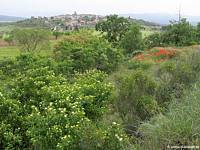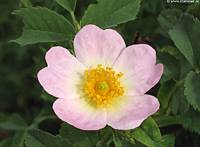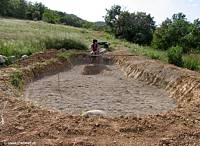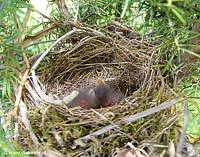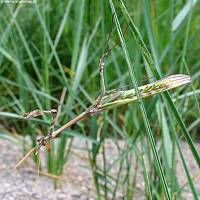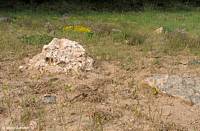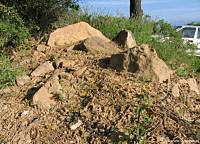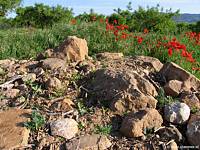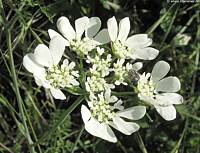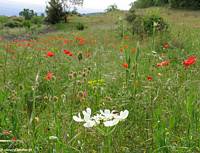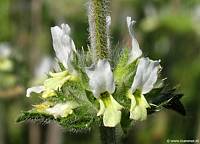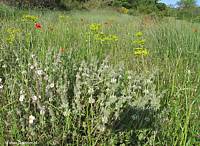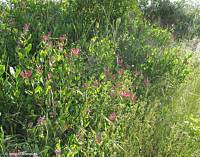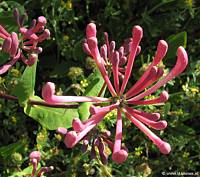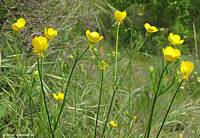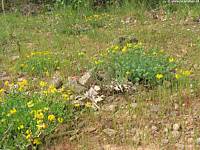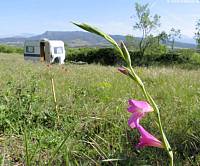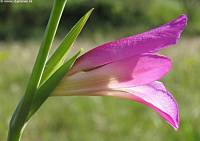|
|
Nature
Switched On
|
|
|
introduction |
2007 May 12 & 13, Saturday & Sunday Dogwood (Cornus sanguinea) is dominantly present in the hedgelines and it is now massively flowering, giving off a honey-like smell and attracting loads of bees. Also the roses are starting their flowering season. |
|
|
Dogrose. |
Looking east in the centre of the terrain.
Dogwood on the left, Jasminum fruticans on the right. Sunday 10:34 |
|
|
I continued to work on the pond. I introduced a layer of 4 cm of
fine sand to protect the pond-lin
|
||
|
Blanca at the north-western end of the pond. Sunday 18:10 |
||
|
On the heap of fine sand near the caravan (left there by the former owner) I detected this mantis, showing off his acrobatic abilities. In the Rocksparrow nest things were developing: two of the five eggs had hatched. |
||
| Mantis (Empusa
pennata). Sunday 16:30 |
Two young Rock Sparrows in their
nest inside the Juniper shrub. Sunday 17:46 |
|
|
The sedum species I had planted in the different stonegroups were
doing extremely well. I guess more than 90% of the plantings had
rooted. Pale Stonecrop (Sedum
sediforme) stands out for its vigorous vegetative growth
while the Wallpepper (Sedum acre) immediately
continued to flower. This offers nice perspectives for our green
roof: we intend to use the same
|
||
|
Stonegroup on the drier higher
terrace in the north-west. Take notice of the worm heaps. Perhaps
they will bury the stones before long! Sunday 10:10 |
||
|
Stonegroup at the extreme north point. Especially the Pale Stonecrop
is doing very well but I still need to weed quite a lot. |
Stonegroup near the entrance.
Here the soil is more disturbed and wetter and I need to apply some
weeding. Saturday 8:40 |
|
|
The following photographs try to give an idea of the wealth of flowers on the terrain these days. |
||
| Yet unknown umbelliferous flower. The leaves look exactly like carrots and the flowers like Tordylium maximum but they exclude each other.. |
...I will have to wait for the
fruit to determine them. Central higher terrace. Sunday 10:19 |
|
|
|
||
|
Close up of
Sideritis
hirsuta |
Sideritis
hirsuta on the lower eastern terrace. Saturday 9:18 |
|
|
Lonicera etrusca on the hightest terrace. Saturday 9.03 |
These flowers weren't really
open yet but some of them were and smelled like sweet ginger. |
|
|
Bulbous Buttercup with its typically backfolded sepals. Sunday 10:37 |
Three different yellow legumes:
Coronilla minima (left), Lotus corniculatus
subsp. delortii (right) and Genista hispanica
(back). Sunday 10:15 |
|
|
|
|
|
|
Gladiolus illyricus. Their leaves look just like a small
version of Iris germanica so it was quite a surprise
to see suddenly these beauties appear on at least 20 places spread
over the terrain. Saturday 9:58 |
||
|
introduction
|
